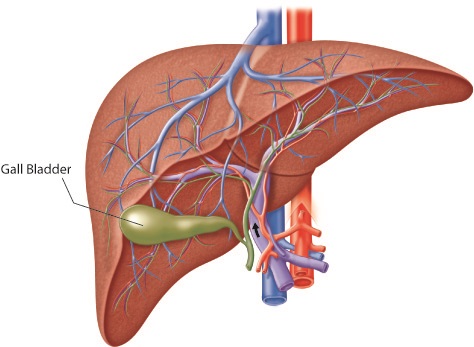CALL TODAY 646-933-3224 | EMAIL
Gallbladder Surgery: When Is Cholecystectomy the Right Choice?
This guide will help you understand when gallbladder surgery is necessary, the different types of cholecystectomy, and what to expect during recovery. The gallbladder is a small organ located beneath the liver that plays an essential role in digestion by storing and releasing bile. However, when the gallbladder develops gallstones, inflammation, or other complications, it can lead to significant pain and digestive issues. In many cases, a cholecystectomy—the surgical removal of the gallbladder—is the most effective treatment.

Understanding Gallbladder Problems
The gallbladder helps break down fats by releasing bile into the small intestine. However, certain conditions can interfere with its function, causing pain and discomfort.
Common Gallbladder Conditions That May Require Surgery
- Gallstones (Cholelithiasis): Hardened deposits of bile that can block the bile ducts and cause pain.
- Gallbladder Inflammation (Cholecystitis): Inflammation due to infection or gallstone obstruction, leading to severe pain and fever.
- Biliary Dyskinesia: A condition in which the gallbladder doesn’t empty bile properly, causing chronic digestive symptoms.
- Gallbladder Polyps: Growths in the gallbladder that, if large, may increase the risk of cancer.
- Gallbladder Cancer: A rare but serious condition where tumor growth may necessitate gallbladder removal.
When Is Gallbladder Surgery Necessary?
Not all gallbladder issues require surgery. However, a cholecystectomy is often recommended when symptoms become severe or when complications arise.
Signs That You May Need Gallbladder Surgery
- Severe and recurring abdominal pain, especially in the upper right side
- Nausea and vomiting after meals
- Frequent bloating and indigestion
- Jaundice (yellowing of the skin and eyes), indicating bile duct blockage
- High fever and chills, suggesting infection
If gallstones or inflammation are causing persistent pain or interfering with digestion, removing the gallbladder is often the best treatment.
Types of Gallbladder Surgery
There are two main types of cholecystectomy procedures: laparoscopic (minimally invasive) surgery and open surgery. The choice depends on the severity of the condition and the patient’s medical history.
1. Laparoscopic Cholecystectomy (Minimally Invasive Surgery)
Laparoscopic cholecystectomy is the most common and preferred method for gallbladder removal. It involves small incisions and the use of a tiny camera (laparoscope) to guide the surgery.
Advantages:
- Smaller incisions and minimal scarring
- Less post-operative pain
- Shorter hospital stay (often same-day discharge)
- Faster recovery (most patients resume normal activities within a week)
Disadvantages:
- Not suitable for all cases, especially if severe inflammation or complications exist
2. Open Cholecystectomy
An open cholecystectomy is performed when laparoscopic surgery is not an option, such as when there is severe infection, scarring from previous surgeries, or complications like a ruptured gallbladder.
Advantages:
- More effective for complicated gallbladder conditions
- Better visualization for the surgeon in cases of extensive scarring
Disadvantages:
- Larger incision and more scarring
- Longer hospital stay (usually 2-4 days)
- Longer recovery period (4-6 weeks)
What to Expect During Gallbladder Surgery
Regardless of the technique used, a cholecystectomy is a routine and safe procedure. Here’s what patients can expect before, during, and after surgery.
Pre-Surgical Preparation
- Fasting for at least 8 hours before surgery
- Stopping certain medications that may increase bleeding risk
- Preoperative tests such as blood work and imaging scans
During the Procedure
- Performed under general anesthesia
- Incisions made in the abdomen (either small for laparoscopic surgery or a larger one for open surgery)
- Removal of the gallbladder, followed by closure of the incisions
The procedure typically takes 1-2 hours, and most laparoscopic patients can go home the same day.
Post-Surgical Recovery
Recovery depends on the type of surgery performed.
- Laparoscopic Surgery: Most patients can return to normal activities within one week.
- Open Surgery: Full recovery may take 4-6 weeks due to the larger incision.
Tips for a Smooth Recovery:
- Follow a low-fat diet initially to help digestion adjust
- Drink plenty of water and eat fiber-rich foods to prevent constipation
- Avoid heavy lifting or strenuous activities for at least two weeks
- Monitor for signs of infection such as redness, swelling, or fever
Life Without a Gallbladder
The gallbladder is not an essential organ, and most people live completely normal lives after its removal. However, some individuals may experience temporary digestive changes, including:
- More frequent bowel movements
- Mild bloating or gas
- Difficulty digesting high-fat foods
Most digestive issues improve over time, and dietary adjustments can help ease the transition.
When to Seek Emergency Care
While gallbladder surgery is generally safe, complications can arise. Seek medical attention if you experience:
- Severe or worsening abdominal pain
- Persistent nausea or vomiting
- High fever or chills
- Yellowing of the skin or eyes (jaundice)
- Swelling, redness, or discharge from the incision site
Conclusion: Is Gallbladder Surgery Right for You?
If you suffer from chronic gallbladder pain, gallstones, or recurrent inflammation, cholecystectomy may be the best option for long-term relief. Minimally invasive laparoscopic surgery offers a quick and effective solution with minimal downtime, while open surgery is reserved for more complex cases.
Consulting a qualified general surgeon is the first step in determining whether gallbladder surgery is right for you. If you’re struggling with persistent gallbladder symptoms, don’t wait—early intervention can prevent complications and improve your quality of life.
If you’re considering gallbladder surgery, the expert team at Lenox Hill Surgeons is here to help. Our experienced surgeons specialize in minimally invasive and advanced gallbladder procedures to ensure the best possible outcomes.
Schedule a consultation today and take the first step toward relief.
Contact Information
LENOX HILL SURGEONS
155 East 76th Street
Suite 1C
New York, NY 10021
646-933-3224
lenoxhillsurgeons@gmail.com
Visit our website for more information: https://lenoxhillsurgeons.com/

